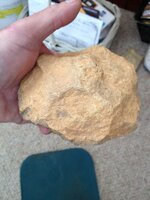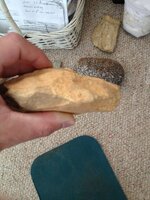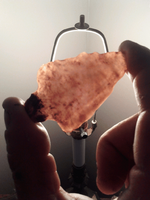unclemac
Gold Member
- Oct 12, 2011
- 7,258
- 7,385
- Primary Interest:
- Beach & Shallow Water Hunting
I always figured this was a core stone....awfully big and unwieldy for a chopper of some sort but does have a good shape. It looks the world like an over-sized hafted scraper that I have seen a number of times from the desert.
Attachments
Upvote
0






























